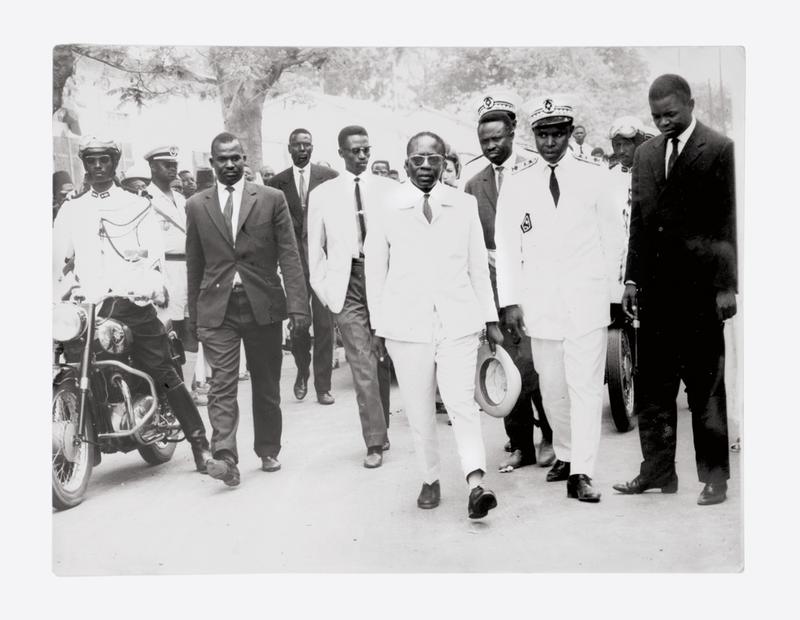Is Kodak another name for decolonization in West Africa?
The marketing of defective cameras and outdated film by French companies in West Africa in the 1960s gave rise to a distinctive aesthetic: an art deliberately refractory to Western standards of good photography and eloquently typified by the work of Seydou Keïta. Play on the visual effects produced by this equipment also left its mark on a new generation drawn to “photography of political things” and bent on recounting the social and political evolution of countries like Senegal and Mali, then in the throes of decolonisation. In addressing the defective camera as both a historical reality and a theoretical object, this article sets out to demonstrate that in terms of practice and technique photography is not purely and simply European, and to suggest a new way of approaching the relations between capitalism, marketing and decolonisation.

Léopold Sédar Senghor dans les rues de Ziguinchor, Sénégal, circa 1963-1966, tirage argentique, 10 × 15 cm. Dakar, collection de Ibrahima Faye et Khady Ndoye.
Jennifer Bajorek is currently assistant professor of Comparative Literature at Hampshire College, USA and research associate in the Research Centre in Visual Identities at the University of Johannesburg, South Africa. Her articles have appeared in Aperture Magazine, Autograph, Theory, Culture & Society, Third Text, Social Text, Africultures, Afriphoto, Fotota, and the Jeu de Paume blog. Her latest book, Unfixed. Photography and Decolonial Imagination in West Africa, is forthcoming from Duke University Press.
Keywords: West Africa, Kodak, photography studios, decolonisation, technique, defective equipment
Citation: Jennifer Bajorek, « Appareils défectueux et images floues. Kodak, l’autre nom de la décolonisation en Afrique de l’Ouest ? », Transbordeur. Photographie histoire société, no. 4, 2020, pp. 144-155.